Cross-posted from the Star Trek Phase II forum:
We've see how props in Star Trek get repurposed. That is, they outlive their usefulness and are given a new paintjob or they have buttons added or are modified in one way or another so that they can rise again! This prop is one of these "repurposed" props.
Some of the components of this prop first appear on the sonic disruptor pistol hand weapons used on the planet Eminiar VII in the episode "Taste of Armageddon." These weapons have a curved pistol grip and a main body; the "barrel" consists of five small pieces of aluminum with some clear red plastic sandwiched between them.

After it was decided the crew of the Enterprise would no longer be returning to Eminiar VII and the Star Trek production team would no longer need several Eminiar sonic disruptor pistol hand props, the question gets asked: "What can be done with the Eminiar props?"
Of course, the aluminum and red plastic sandwich barrel units ultimately got removed from the Eminiar sonic disruptor pistol weapons. Many of them became simple devices in their own right that Dr. McCoy used on the planet Omega IV--possibly to conduct some kind of medical research. If you look carefully, you can see a couple of them sitting on the workbench tabletop along with a couple of scalpel devices and a couple of "jumper" blocks and a green tape deck cartridge in "The Omega Glory:"

We see Sargon and Thalassa using one in a similar fashion in "Return to Tomorrow." It is possibly some kind of engineering or research or medical device used to help construct android bodies; we see it sitting on the workbench tabletop:

But not all of the "aluminum and red plastic sandwich barrel units" simply became loose instruments and tools. Some of them were stuck onto the end of a newly-constructed prop: a "ray-generator."
The term "ray-generator" first appears in the script for the episode "Metamorphosis" (which is where this prop makes its first appearance). "Metamorphosis" was the second episode filmed for Star Trek's second season. The script, written by Gene Coon, has this to say In Act II, Scene 39:
EXT. SHUTTLECRAFT – ANGLE ON SPOCK
He has a ray-generator of some sort in hand, is exmin-
ing the circuits thoughtfully. He takes his generator,
aims it, turns it on. There is a hight pitched HUMMING
SOUND, and Spock looks pleased. Obviously whatever
he has done has worked.
ANOTHER ANGLE ON SPOCK
As The Companion materializes behind him, silent at
first... we should get the impression that it is look-
ing over his shoulder. Then its lights begin to change
... from gentle pastels to more angry bold colors…
and we begin to HEAR it... but it is not the melodic,
gentle tintinnabulation of bells... it is a harsher,
more acute sound... as though it is angry. Spock
hears it, turns around and reacts.
He strikes out... but hits nothing. The generator in
his hand shoots out smoke and flame... short circuits
hit the exposed control panel in the rear of the shuttle-
craft... and then as Spock shouts there is a CRACKLING as
of electricity, and Spock's body is hurled backward
against the bulkhead, and he slumps to the ground, un-
conscious. The Companion hovers, and the HUM changes
to one of more moderate, peaceful intensity.
And here's a shot from that scene:
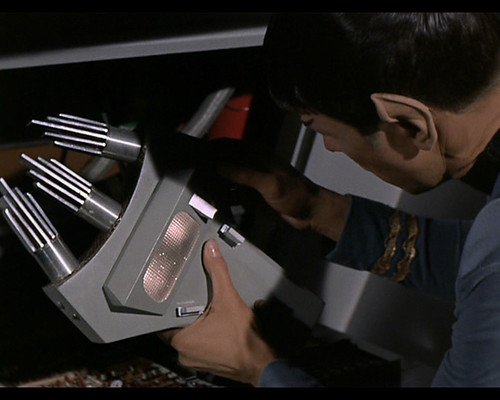
As you can see, this is a large bodied, bulky prop with three of those "aluminum and red plastic sandwich barrel units" stuck to the top. It has a screen of sorts on it and some bulky silver knobs and a large knob towards the bottom. It is grayish in color.
So, the earliest reference to this device is as a "ray-generator." Later, Stephen Whitfield took pictures of this prop for his book The Making of Star Trek. In that book he called the device a "(Spock Built) Ray Generator and Energy Neutralizer." (Although there is no reference to Spock having cobbled this device together out of available components while the Galileo was stranded, perhaps Whitfield thought Spock did exactly that.) At any rate, here is Whitfield's photograph:

The next time we see the ray-generator prop, Mr. Scott uses it on board the Constellation in "The Doomsday Machine." (Interestingly, Scotty knows exactly where to find this device--hidden in a "secret compartment" in Engineering. So starship operations are remarkably standardized--all the way down to where they keep their tools; Scotty knew exactly where the Constellation's chief engineer kept the ray-generator!
Here's Mr. Scott retrieving the ray-generator:
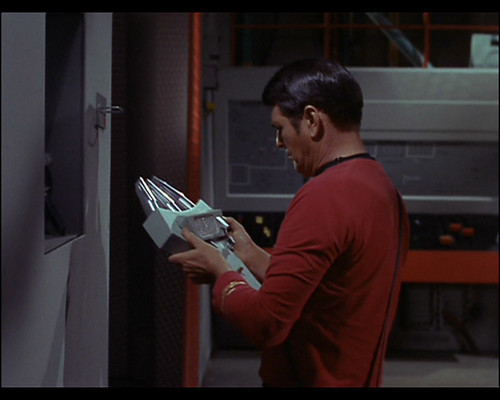
And here he is a short time later seen using the ray-generator device to help in his task of cross-connecting the impulse engines with the warp engine control interface. (The man's a freakin' genius.)

We see the ray-generator again in "The Ultimate Computer." (This and the "Metamorphosis" shot are probably the best look we get at this device in The Original Series.) Ensign Harper uses a ray-generator to help get the M-5 computer hooked up.
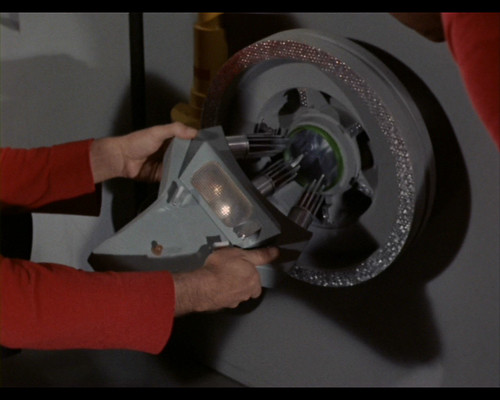
And then he grabs it again when he goes to pull the plug on M-5:

There are three more appearances of the prop--but two appearances are relatively recent appearances and might be considered prop "reproductions."
In Star Trek V: The Final Frontier, we see a bridge officer on the Enterprise NCC-1701-A using a ray-generator. You can see that it's a slightly different style (which makes sense, I suppose). There are reddish-colored buttons on the front of the device below the "screen" rather than two silver rectangular blocky-knobs.
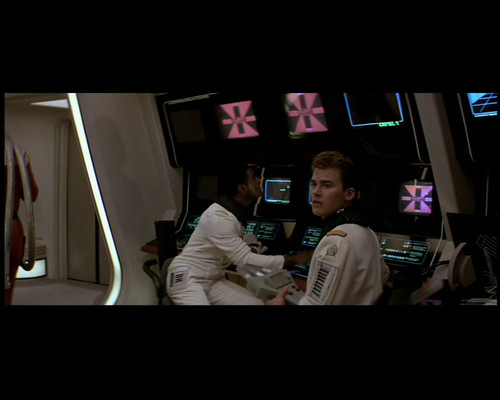

In the Deep Space Nine episode "Trials and Tribble-ations," the crew of Deep Space Nine travels back in time to the events of the original Star Trek episode "The Trouble with Tribbles" where, using special effects, they are digitally added in to old original footage. In some added scenes, an Enterprise Lieutenant works on some power conduits using the ray-generator with Chief O'Brien and Doctor Bashir. Apparently, the writer of the "Trials and Tribble-ations" script did not know this prop already had a name from the "Metamorphosis" script; in the "Trials and Tribble-ations" script, the device is referred to as a "Trident Scanner." With its three prongs or "three (tri-) teeth (-dent)" on the front end, it does indeed look rather like Poseidon's trident. However, I prefer the original term "ray-generator" from the "Metamorphosis" script.
Here's a shot from "Trials and Tribble-ations:"

As Star Trek prop fans go about their hobby of reproducing various Star Trek props, there's been one silly little nagging question with this ray-generator prop: on the sides of the prop up near the top--are there two round button/bolt things--or not? When you blow up the shot from "Metamorphosis," it looks like there are a couple of round button/bolt things--and the main body looks to be about an inch and a half thick.

But when you look at it in "The Doomsday Machine," it doesn’t look like there are those round button/bolt things--and the main body looks more like two inches thick.
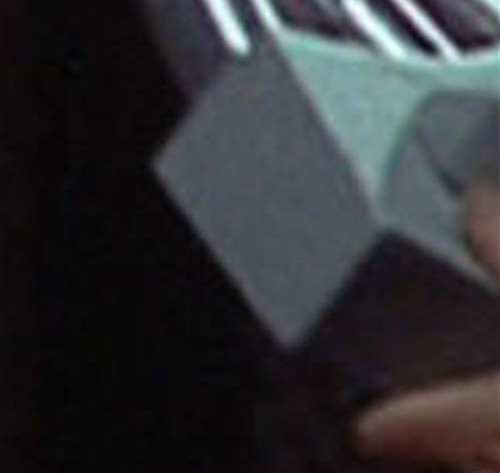
So, is it one and a half inches thick with bolts or two inches thick with no bolts? Of course, Star Trek prop fans love arguing about such prop minutiae. It turns out, there is a little-known answer to that question--and it lies in a few brief frames in the background of the episode "I, Mudd:"

What we see by blowing up those frames from that episode is that there were actually at least two ray-generator props constructed. This makes sense: one of them had to actually burst into flames in Leonard Nimoy's hands in the episode "Metamorphosis." It's not surprising that more than one would have been made.

Although we can't actually see whether one has bolts and one doesn't, it does appear that one is a bit thicker than the other. And simply knowing that at least two of these props were made certainly accounts for any discrepancies between different versions seen on screen. So the answer is: there are both kinds!
Our prop reproduction at the Star Trek Phase II studio is the thinner, two-bolt variant:

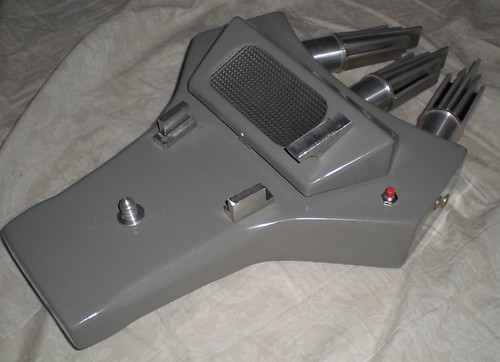

It shows up in the recent episode "Blood and Fire." (The Enterprise takes quite a beating in that episode, and Mr. Scott needs to do some damage and repair work to the ship's bulkheads and power conduits.) If you look carefully, you can see it lying in front of Mr. Scott on the briefing room table in the "Blood and Fire" trailer. Don't blink or you'll miss it!
We also recently picked up a second "Ray-generator" prop. The minor improvements it has over the prop that first version in our studio are:
1) The button to the right of the "screen" is a more accurate black color instead of a red color.
2) The large button located at the center towards the bottom is a more accurate brownish-brass colored instead of a steel-aluminum color.
Here are some shots of my "ray-generator" prop reproduction:
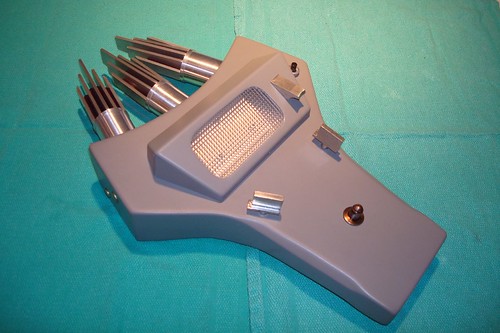



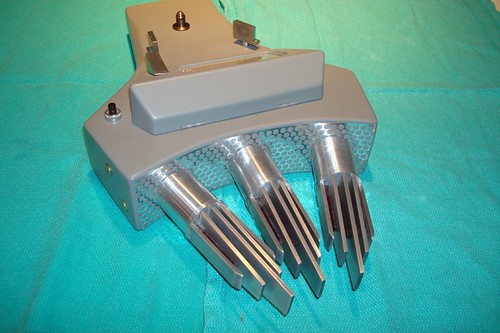
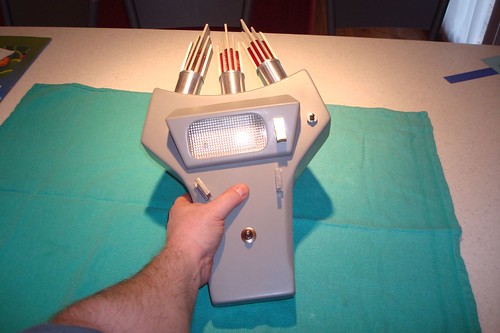 [/color]
[/color]
Slide show is at:
http://www.flickr.com/photos/10901121@N06/sets/72157603968875842/show/
Greg Schnitzer
Property Master
Star Trek Phase II
We've see how props in Star Trek get repurposed. That is, they outlive their usefulness and are given a new paintjob or they have buttons added or are modified in one way or another so that they can rise again! This prop is one of these "repurposed" props.
Some of the components of this prop first appear on the sonic disruptor pistol hand weapons used on the planet Eminiar VII in the episode "Taste of Armageddon." These weapons have a curved pistol grip and a main body; the "barrel" consists of five small pieces of aluminum with some clear red plastic sandwiched between them.

After it was decided the crew of the Enterprise would no longer be returning to Eminiar VII and the Star Trek production team would no longer need several Eminiar sonic disruptor pistol hand props, the question gets asked: "What can be done with the Eminiar props?"
Of course, the aluminum and red plastic sandwich barrel units ultimately got removed from the Eminiar sonic disruptor pistol weapons. Many of them became simple devices in their own right that Dr. McCoy used on the planet Omega IV--possibly to conduct some kind of medical research. If you look carefully, you can see a couple of them sitting on the workbench tabletop along with a couple of scalpel devices and a couple of "jumper" blocks and a green tape deck cartridge in "The Omega Glory:"

We see Sargon and Thalassa using one in a similar fashion in "Return to Tomorrow." It is possibly some kind of engineering or research or medical device used to help construct android bodies; we see it sitting on the workbench tabletop:

But not all of the "aluminum and red plastic sandwich barrel units" simply became loose instruments and tools. Some of them were stuck onto the end of a newly-constructed prop: a "ray-generator."
The term "ray-generator" first appears in the script for the episode "Metamorphosis" (which is where this prop makes its first appearance). "Metamorphosis" was the second episode filmed for Star Trek's second season. The script, written by Gene Coon, has this to say In Act II, Scene 39:
EXT. SHUTTLECRAFT – ANGLE ON SPOCK
He has a ray-generator of some sort in hand, is exmin-
ing the circuits thoughtfully. He takes his generator,
aims it, turns it on. There is a hight pitched HUMMING
SOUND, and Spock looks pleased. Obviously whatever
he has done has worked.
ANOTHER ANGLE ON SPOCK
As The Companion materializes behind him, silent at
first... we should get the impression that it is look-
ing over his shoulder. Then its lights begin to change
... from gentle pastels to more angry bold colors…
and we begin to HEAR it... but it is not the melodic,
gentle tintinnabulation of bells... it is a harsher,
more acute sound... as though it is angry. Spock
hears it, turns around and reacts.
He strikes out... but hits nothing. The generator in
his hand shoots out smoke and flame... short circuits
hit the exposed control panel in the rear of the shuttle-
craft... and then as Spock shouts there is a CRACKLING as
of electricity, and Spock's body is hurled backward
against the bulkhead, and he slumps to the ground, un-
conscious. The Companion hovers, and the HUM changes
to one of more moderate, peaceful intensity.
And here's a shot from that scene:

As you can see, this is a large bodied, bulky prop with three of those "aluminum and red plastic sandwich barrel units" stuck to the top. It has a screen of sorts on it and some bulky silver knobs and a large knob towards the bottom. It is grayish in color.
So, the earliest reference to this device is as a "ray-generator." Later, Stephen Whitfield took pictures of this prop for his book The Making of Star Trek. In that book he called the device a "(Spock Built) Ray Generator and Energy Neutralizer." (Although there is no reference to Spock having cobbled this device together out of available components while the Galileo was stranded, perhaps Whitfield thought Spock did exactly that.) At any rate, here is Whitfield's photograph:

The next time we see the ray-generator prop, Mr. Scott uses it on board the Constellation in "The Doomsday Machine." (Interestingly, Scotty knows exactly where to find this device--hidden in a "secret compartment" in Engineering. So starship operations are remarkably standardized--all the way down to where they keep their tools; Scotty knew exactly where the Constellation's chief engineer kept the ray-generator!
Here's Mr. Scott retrieving the ray-generator:

And here he is a short time later seen using the ray-generator device to help in his task of cross-connecting the impulse engines with the warp engine control interface. (The man's a freakin' genius.)

We see the ray-generator again in "The Ultimate Computer." (This and the "Metamorphosis" shot are probably the best look we get at this device in The Original Series.) Ensign Harper uses a ray-generator to help get the M-5 computer hooked up.

And then he grabs it again when he goes to pull the plug on M-5:

There are three more appearances of the prop--but two appearances are relatively recent appearances and might be considered prop "reproductions."
In Star Trek V: The Final Frontier, we see a bridge officer on the Enterprise NCC-1701-A using a ray-generator. You can see that it's a slightly different style (which makes sense, I suppose). There are reddish-colored buttons on the front of the device below the "screen" rather than two silver rectangular blocky-knobs.


In the Deep Space Nine episode "Trials and Tribble-ations," the crew of Deep Space Nine travels back in time to the events of the original Star Trek episode "The Trouble with Tribbles" where, using special effects, they are digitally added in to old original footage. In some added scenes, an Enterprise Lieutenant works on some power conduits using the ray-generator with Chief O'Brien and Doctor Bashir. Apparently, the writer of the "Trials and Tribble-ations" script did not know this prop already had a name from the "Metamorphosis" script; in the "Trials and Tribble-ations" script, the device is referred to as a "Trident Scanner." With its three prongs or "three (tri-) teeth (-dent)" on the front end, it does indeed look rather like Poseidon's trident. However, I prefer the original term "ray-generator" from the "Metamorphosis" script.
Here's a shot from "Trials and Tribble-ations:"

As Star Trek prop fans go about their hobby of reproducing various Star Trek props, there's been one silly little nagging question with this ray-generator prop: on the sides of the prop up near the top--are there two round button/bolt things--or not? When you blow up the shot from "Metamorphosis," it looks like there are a couple of round button/bolt things--and the main body looks to be about an inch and a half thick.

But when you look at it in "The Doomsday Machine," it doesn’t look like there are those round button/bolt things--and the main body looks more like two inches thick.

So, is it one and a half inches thick with bolts or two inches thick with no bolts? Of course, Star Trek prop fans love arguing about such prop minutiae. It turns out, there is a little-known answer to that question--and it lies in a few brief frames in the background of the episode "I, Mudd:"

What we see by blowing up those frames from that episode is that there were actually at least two ray-generator props constructed. This makes sense: one of them had to actually burst into flames in Leonard Nimoy's hands in the episode "Metamorphosis." It's not surprising that more than one would have been made.

Although we can't actually see whether one has bolts and one doesn't, it does appear that one is a bit thicker than the other. And simply knowing that at least two of these props were made certainly accounts for any discrepancies between different versions seen on screen. So the answer is: there are both kinds!
Our prop reproduction at the Star Trek Phase II studio is the thinner, two-bolt variant:



It shows up in the recent episode "Blood and Fire." (The Enterprise takes quite a beating in that episode, and Mr. Scott needs to do some damage and repair work to the ship's bulkheads and power conduits.) If you look carefully, you can see it lying in front of Mr. Scott on the briefing room table in the "Blood and Fire" trailer. Don't blink or you'll miss it!
We also recently picked up a second "Ray-generator" prop. The minor improvements it has over the prop that first version in our studio are:
1) The button to the right of the "screen" is a more accurate black color instead of a red color.
2) The large button located at the center towards the bottom is a more accurate brownish-brass colored instead of a steel-aluminum color.
Here are some shots of my "ray-generator" prop reproduction:






Slide show is at:
http://www.flickr.com/photos/10901121@N06/sets/72157603968875842/show/
Greg Schnitzer
Property Master
Star Trek Phase II








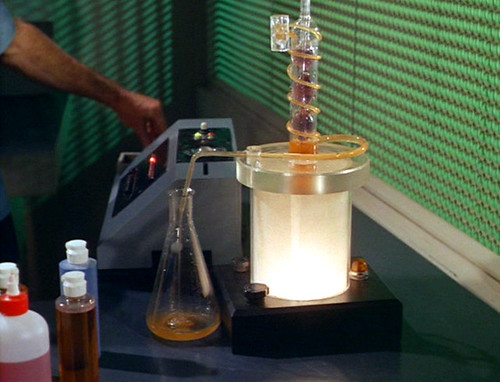

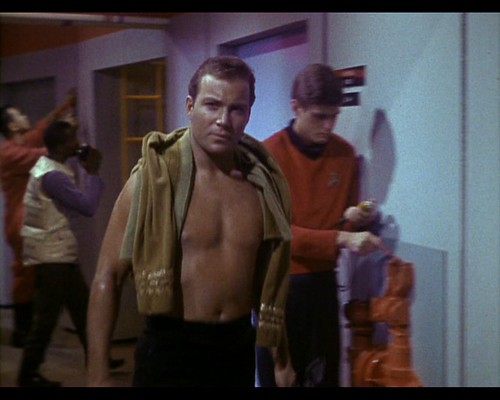









































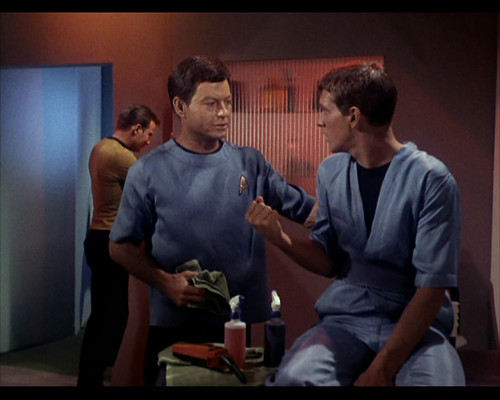
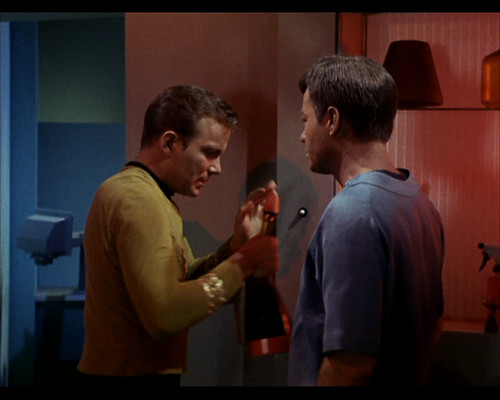
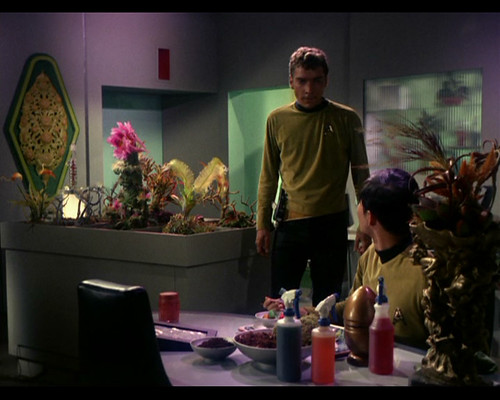


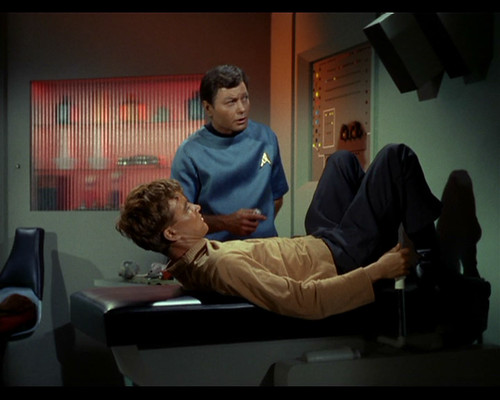



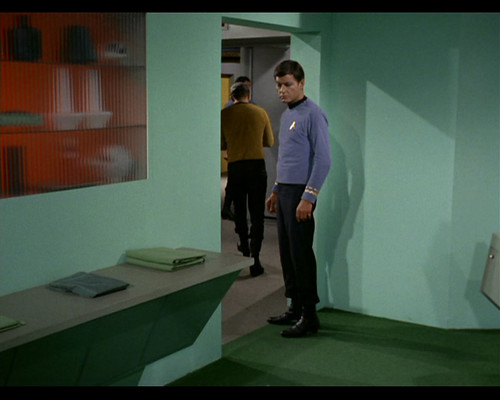

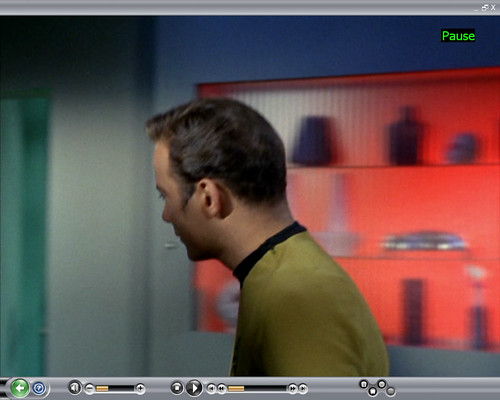

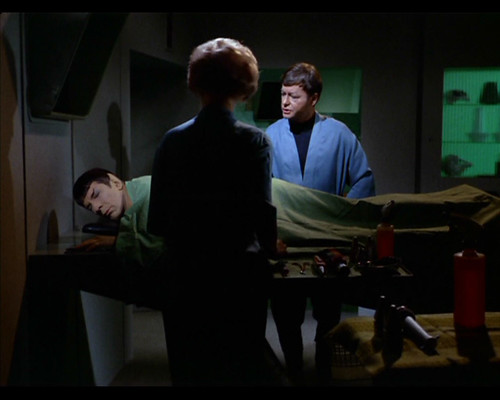
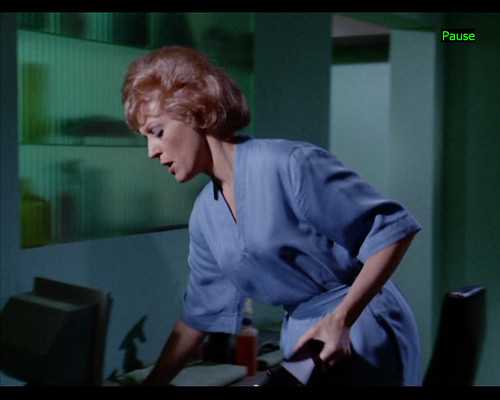

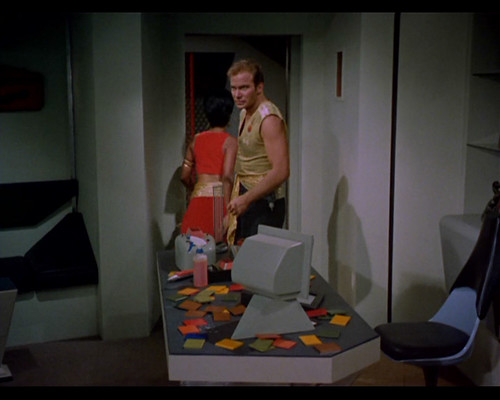


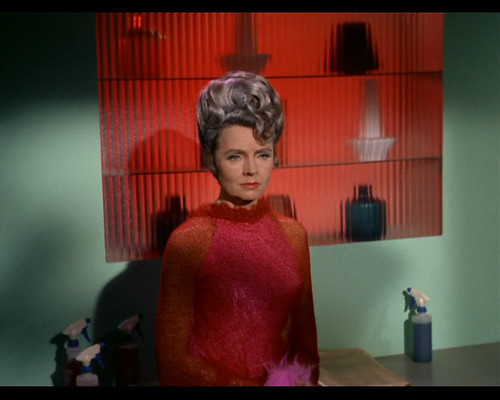
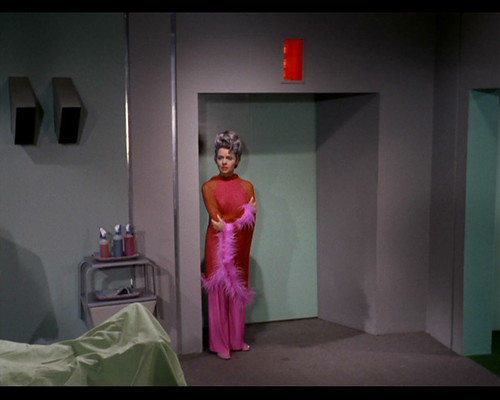
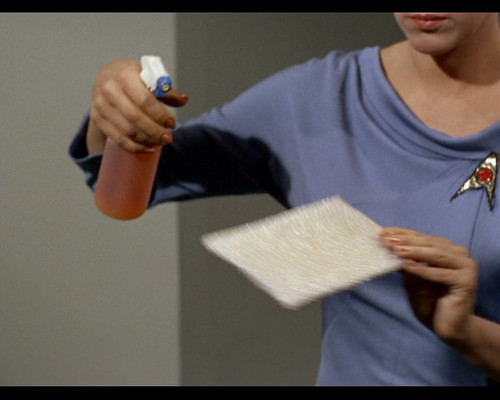
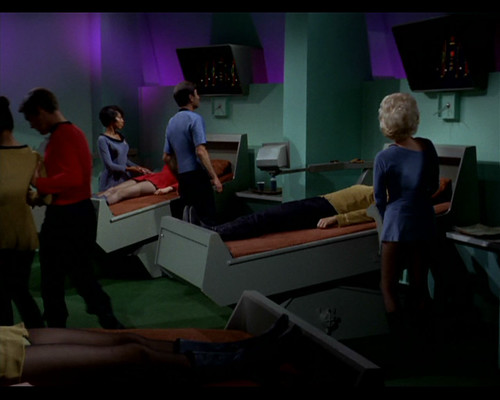
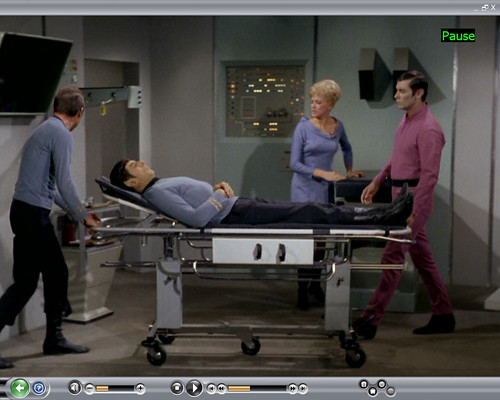
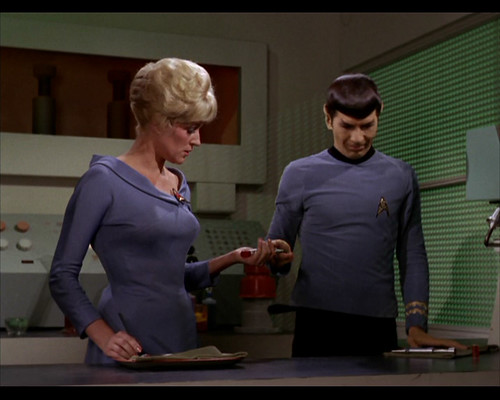
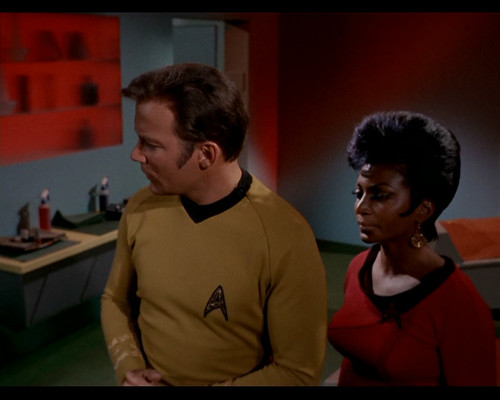
 Saved!
Saved!